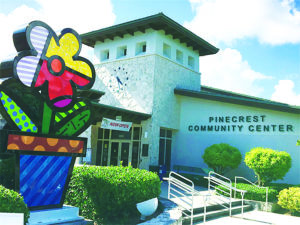|
Getting your Trinity Audio player ready...
|

Well before our 1996 incorporation, people have loved living in the area we now call Pinecrest. During the 1900s, Miami pioneer and railroad tycoon Henry Flagler used property at US-1 and SW 102nd Street as a staging area during the construction of the Overseas Railroad to the Florida Keys. In 1936, the area at Red Road and SW 111 Street became one of Miami’s first tourist attractions, Parrot Jungle. The Miami Serpentarium was located on US-1 for many decades. Pinecrest has a rich history.
Our affluent Village continues to change. The small homes on large lots have been replaced by much larger abodes. In fact, it is hard to find an original 1950s or 1960s home remaining. Pinecrest’s codes had to adapt and evolve to allow us to realize the prosperity we have today.
Now the US-1 Corridor is beginning redevelopment. In 2012 Pinecrest went through a visioning process to see how to be compatible with the ever-changing landscape of Miami-Dade County. Among the successes of that visioning was the opening of the Baptist Health Building in February 2017 at 13101 South Dixie Highway. Once controversial, it turned into a successful and valuable resource in our community.
As the Village starts its 2022 visioning process, it hopes to once again stay ahead of changes so that they benefit Pinecrest’s overall character and quality of life. At the forefront is the huge population growth expected in Miami-Dade County and the rapid transit plans to handle that population. In 2021, we had 2.7m residents. By 2035, it will be 3.3m, an approximate 20 percent growth. Most of these people are moving to South Dade. Right now, South Dade has 50 percent of the land, 25 percent of the population and 12 percent of the jobs. The logical future is to see most of the growth south and west of Pinecrest and along the US-1 corridor.
One of life’s constants is change, and for some, a resistance to change. At a January 27th Village Council Meeting, Mayor Joe Corradino took a good deal of heat from residents suggesting his work life conflicted with his role as mayor. Corradino is an urban planner. As I see it, it actually helps the Village to have that level of experience guiding the visioning process.
Mayor Corradino was a guest on my February 17 edition of The MiamiHal Real Estate Show (miamihal.com/the-miamihal-real-estate-show/2022/2/17/episode-52). He spoke about the Council’s efforts to work in concert with the county and the neighboring communities to benefit from the coming changes.
In 2017 Miami-Dade County approved an update to its RTZ ordinance that said all areas within 1/2 mile of the US-1 Corridor would, by zoning, allow 125-250 dwelling units per acre around the transit stations, and 16-25 stories high. Between the stations, 36 to 60 dwelling units per acre at six or more stories would be allowed. This would be completely against the fiber and character of Pinecrest. As part of the Miami-Dade League of Cities, Mayor Corradino was instrumental in working to modify this proposal. The current proposal would allow incorporated cities to maintain control of the process if they came up with a plan supporting rapid transit.
Pinecrest’s Council is working to craft a cohesive message and seeks resident input to support the following visioning concepts:
● Potential diversification of housing stock, providing housing options to enable people who no longer want to care for a large lot to remain in the community.
● Protecting the single-family character of the community by confining commercial growth to the current corridor and not push into the residential zones.
● Providing increased options for a better shopping, dining and entertainment experience. The Village’s analysis shows that many Pinecrest residents go elsewhere for those things and the US-1 Corridor commercial area is focused on the drivers on US-1, not the neighborhoods abutting it.
● Creating a physical place more in character with the rest of Pinecrest. The existing shopping area is based on a 1970s style zoning code and is not as welcoming in appearance as the remainder of the community.
● To support the rapid transit to the extent that fits the character of Pinecrest.
● To limit the county’s ability to unilaterally implement their Rapid Transit Zone Ordinance (RTZ) in Pinecrest.
Understanding the above will help all parties to work constructively to create a future Pinecrest. Mayor Corradino adds, “The most important thing in Pinecrest is to do things right. This process has no time frame placed on it.”
Real Estate Update
As of 2/20/22, there were only 53 properties for sale in Pinecrest, 33 homes pending sale and 2.5 months of inventory. This is still a strong Seller’s market, but not forever! If you’re ready to move, get the best local expertise, truthful guidance and realistic expectations. It’s easy to get started at miamihal.com/getstarted.
Hal Feldman (MiamiHal) is a Realtor with RE/MAX Advance Realty. You can contact him with your story ideas or real estate questions at www.MiamiHal.com, Hal@MiamiHal.com or www.facebook.com/MiamiHal





